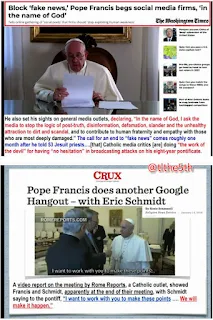I noted
the other day that an acquaintance of Jared Lee Loughner, the accused gunman in Gabrielle Giffords shooting in Tucson, believed his mother was Jewish.
Bryce Tierney
told Mother Jones that Loughner listed Mein Kampf as a favorite book in part to provoke his Jewish mother.
Nate Bloom, the noted Jewish roots columnist and researcher, has done the legwork -- and pretty much buries this notion.
I'll hand it over to him:
It is appalling how one comment---a friend of Jared Loughner telling a Mother Jones’ reporter that Jared Loughner’s mother is “Jewish”---goes viral in an instant.
In hours, "this fact" was all over on anti-Semitic sites. And, of course, there are the “commentators” who love to ‘blame the victim’ via some pop psychology theory that Jared acted out of “Jewish self-hatred.”
I figured that this was the moment to try and get “truth” dressed, and into the public arena a lot faster than usual. In other words, to use the tools of the internet to determine the veracity of what this friend told Mother Jones.
I cover Jews in popular culture for Jewish newspapers and I know how often famous people are mis-identified as Jewish or mis-identified as not Jewish. I also know that a lot of people are not outright lying about claiming someone is Jewish---they just get it wrong.
So, with my friend Michael, we ran down everything we could from public records on Jared Loughner’s mother’s family background. It took a lot of “search terms” and databases to find what we did.
Here’s what we found:
Jared Lee Loughner’s mother is Amy Totman Loughner;
Amy Loughner---Known Parentage from Public Records:
Her [Amy’s] parents were Lois May Totman and Laurence Edward Totman.
----Lois M. Totman died in 1999 and Laurence E. Totman died in 2005. Both were registered nurses. Laurence worked at a VA facility in Tucson. We both found this info via google news archives, social security death index.
From 1930 census records
Laurence E. Totman was born in Illinois in 1925.
His (Laurence’s) parents were Laurence A. Totman and his wife, Mary.
Laurence Totman pere (the elder) was born in Kansas to a Pennsylvania father and an Illinois mother. Mary was from Illinois, as were both of her parents.
A sister-in-law named Myrtle M. Brennan is listed as living with them also.
1920/1910 census records---Totman Family:
In 1920, Lawrence Totman, (Jared’s) great-grandfather, is living with his aunt, Rosa Clarke, who was born in illinois to two Irish-born parents.
Rosa is his mother's sister. On the 1910 census, his (Laurence, the elder) maternal grandparents are listed as Irish-born.
Father, Orvie Totman was born in Ohio to Ohio-born parents.
Amy Loughner’s Mother’s Line:
See obit, below, from Arlington (Illinois) Daily Record, June 24, 1999---Obituary of Helen Medernach of Virgil, Illinois. Helen was the sister of Lois M. Totman (the mother of Amy Totman Loughner). Helen was the great aunt of Jared Loughner.
As you can see, Helen’s funeral (mass) was held at a Catholic church. Helen (and Lois) were the children of Anton Bleifuss and Jessie Bleifuss (nee Anderson). Lois M. Totman died just days after her sister, Helen.
According to the census records, Anton Bleifuss was born in Bremen, Germany, to German parents. Jessie Anderson Bleifuss was born in Illinois to a father born in Denmark and a mother born in Illinois.
Conclusion---It is exceedingly unlikely that Amy Loughner has any Jewish ancestry. The only “line” not traced his Amy’s father’s mother’s family. The other three lines (Amy’s father’s father, Amy’s mother’s father, and Amy’s mother mother)---show, to all but the most obtuse, that these were/are not Jewish families. Moreover, it is quite clear that Amy’s mother, Lois Bleifuss Trotman, came from a Catholic family.
At OpEd News, Rob Kall
interviews Rabbi Stephanie Aaron of Giffords' shul, Congregation Chaverim, she dispenses with any notion that the Loughner's were in any way associated with the community:
"We had a meeting of the Tucson Board of Rabbis. We all looked at our rosters from many years back. No one has ever heard of the family -- him, his parents, any of them. I can say with absolute certainty that we do not know him in pretty much the entire affiliated community."
I would add this: Bleifuss may be a Jewish name. (The noted investigative journalist, Joel Bleifuss, is Jewish.) Anton Bleifuss, Jared Lee Loughner's great-grandfather, might then have been Jewish -- but not so committed that he didn't defer to his wife when it came to raising the children as Roman Catholics.
As I noted in my earlier posting, Jared Loughner is not the most reliable of reporters, and Tierney's recollection was added as an aside. Mix into this the fact that Amy Loughner's brother is Anton Totman -- apparently named for his mother's father.
Loughner's family was in no way Jewish, nor was his mother -- but she might have mentioned her Jewish grandfather, beloved enough to live on in her brother's name, with pride or interest. Under those circumstances Loughner, who sought "chaos" according to Tierney, might have sought to provoke his mother and his uncle by pretending to admire (or actually admiring) Adolph Hitler. He might have told Tierney that his mother was Jewish as a shorthand, or might have seen her as Jewish -- like I said, not the most reliable reporter. Or he might have explained the lineage, and Tierney might understandably have conflated it as "mother Jewish."
It sets up a fascinating contrast: Gabrielle Giffords, who plunges into public service when she is 30, just the same age she delves into her father's Judaism and chooses to embrace it; and Jared Loughner, who learns of a distant Jewish connection deep in his family's past -- and reviles it as he retreats into madness.
An obituary for Loughman's great aunt, Helen Medernach, is after the jump.
Date: June 24, 1999
Section: Business
Edition: Cook
Page: 10
Column: Obituaries
Helen Medernach of Virgil
A funeral Mass for Helen Medernach, 77, will be held at 10:30 a.m. Friday, at S.S. Peter & Paul Church. Fr. Aloysius Neumann will officiate.
Born Sept. 21, 1921, in Sycamore, the daughter of Anton and Jessie (nee Anderson) Bleifuss, she passed away peacefully Sunday, June 20, 1999, at Bethany Care Center in Sycamore, where she had made her home since May. Interment will be in S.S. Peter and Paul Cemetery, Virgil.
Helen grew up in Sycamore and graduated from Sycamore High School, class of 1939. She went on to take business courses which shortly landed her a job at Anaconda Wire Company in Sycamore. She went to California with her sister, Lois, and was employed in a business office for a few years before returning to work in Chicago. The last 20 years of her working career were spent in the business office at the Duplex Company in Sycamore.
She was united in marriage to William H. `Willie' Medernach on May 16, 1959.
They made their home in Sycamore for a short time before moving to Virgil where they lived across the street from the church for many years.
Survivors include her sisters, Virginia Stran of DeKalb, Irene Luty of Covina, Calif., Lois (Lawrence) Totman of Tucson, Ariz. and Dorothy (`Trig') Troeger of Sycamore; several nieces and nephews; and a family of dear friends. In addition, she leaves the quiet, simple legacy of one who cared. Her many thoughtful words of thanks, encouragement and friendship were patiently penned into countless cards that found their way into the hearts of many friends and neighbors through the years.
She was preceded in death by her parents; her husband in 1997; and brothers, Albert, Lyle, Leslie and Donald Bleifuss.
Friends may call from 4 to 8 p.m. today, at Conley Funeral Home, 116 W. Pierce St., Elburn, and from 9:30 a.m. until the time of the Mass Friday, at the church.
Memorials in her name may be made to Masses in her memory.

























